[ Opisthokonta | Fungi | Dikarya | . . .
. . . | Candida/Lodderomyces clade | Candida | Candida albicans ]
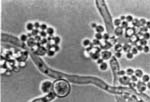 Picture Source
Picture Source
|
| Taxonomy: | Eukaryota | Opisthokonta | Fungi | Dikarya | Ascomycota | saccharomyceta | Saccharomycotina | Saccharomycetes | Saccharomycetales | Debaryomycetaceae | Candida/Lodderomyces clade | Candida | Candida albicans |
| Synonym: | Candida claussenii (obsolete), Candida langeroni (obsolete), Candida stellatoidea (obsolete), Monilia albicans (obsolete) |
| Comment: | Candida albicans is one of the most commonly encountered human pathogens, causing a wide variety of infections ranging from mucosal infections in generally healthy persons to life-threatening systemic infections in individuals with impaired immunity. Candida albicans differs in various respects from other genome sequences in that both copies of the genome are explicitly represented. Similar to many other Candida species, a CUG codon in Candida albicans corresponds to a serine residue instead of the universal leucine. |
|
|

|
Go to NCBI Taxonomy (1094981) |
|
|
|  |
Encyclopedia of life |
|
|  |
Wikipedia |
| Publication: |
Hirakawa MP, Martinez DA, Sakthikumar S et. al. 
( 2015)
Genome Res 25, 413-425.

|
|
[ Opisthokonta | Fungi | Dikarya | . . .
. . . | Candida/Lodderomyces clade | Candida | Candida albicans ]
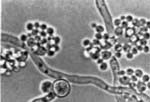 Picture Source
Picture Source
|
| Taxonomy: | Eukaryota | Opisthokonta | Fungi | Dikarya | Ascomycota | saccharomyceta | Saccharomycotina | Saccharomycetes | Saccharomycetales | Debaryomycetaceae | Candida/Lodderomyces clade | Candida | Candida albicans |
| Synonym: | Candida claussenii (obsolete), Candida langeroni (obsolete), Candida stellatoidea (obsolete), Monilia albicans (obsolete) |
| Comment: | Candida albicans is one of the most commonly encountered human pathogens, causing a wide variety of infections ranging from mucosal infections in generally healthy persons to life-threatening systemic infections in individuals with impaired immunity. Candida albicans differs in various respects from other genome sequences in that both copies of the genome are explicitly represented. Similar to many other Candida species, a CUG codon in Candida albicans corresponds to a serine residue instead of the universal leucine. |
|
|

|
Go to NCBI Taxonomy (1094987) |
|
|
|  |
Encyclopedia of life |
|
|  |
Wikipedia |
| Publication: |
Hirakawa MP, Martinez DA, Sakthikumar S et. al. 
( 2015)
Genome Res 25, 413-425.

|
|
[ Opisthokonta | Fungi | Dikarya | . . .
. . . | Candida/Lodderomyces clade | Candida | Candida albicans ]
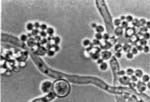 Picture Source
Picture Source
|
| Taxonomy: | Eukaryota | Opisthokonta | Fungi | Dikarya | Ascomycota | saccharomyceta | Saccharomycotina | Saccharomycetes | Saccharomycetales | Debaryomycetaceae | Candida/Lodderomyces clade | Candida | Candida albicans |
| Synonym: | Candida claussenii (obsolete), Candida langeroni (obsolete), Candida stellatoidea (obsolete), Monilia albicans (obsolete) |
| Comment: | Candida albicans is one of the most commonly encountered human pathogens, causing a wide variety of infections ranging from mucosal infections in generally healthy persons to life-threatening systemic infections in individuals with impaired immunity. Candida albicans differs in various respects from other genome sequences in that both copies of the genome are explicitly represented. Similar to many other Candida species, a CUG codon in Candida albicans corresponds to a serine residue instead of the universal leucine. |
|
|

|
Go to NCBI Taxonomy (1182531) |
|
|
|  |
Encyclopedia of life |
|
|  |
Wikipedia |
| Publication: |
Hirakawa MP, Martinez DA, Sakthikumar S et. al. 
( 2015)
Genome Res 25, 413-425.

|
|
[ Opisthokonta | Fungi | Dikarya | . . .
. . . | Candida/Lodderomyces clade | Candida | Candida albicans ]
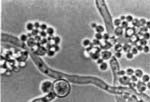 Picture Source
Picture Source
|
| Taxonomy: | Eukaryota | Opisthokonta | Fungi | Dikarya | Ascomycota | saccharomyceta | Saccharomycotina | Saccharomycetes | Saccharomycetales | Debaryomycetaceae | Candida/Lodderomyces clade | Candida | Candida albicans |
| Synonym: | Candida claussenii (obsolete), Candida langeroni (obsolete), Candida stellatoidea (obsolete), Monilia albicans (obsolete) |
| Comment: | Candida albicans is one of the most commonly encountered human pathogens, causing a wide variety of infections ranging from mucosal infections in generally healthy persons to life-threatening systemic infections in individuals with impaired immunity. Candida albicans differs in various respects from other genome sequences in that both copies of the genome are explicitly represented. Similar to many other Candida species, a CUG codon in Candida albicans corresponds to a serine residue instead of the universal leucine. |
|
|

|
Go to NCBI Taxonomy (1182537) |
|
|
|  |
Encyclopedia of life |
|
|  |
Wikipedia |
| Publication: |
Hirakawa MP, Martinez DA, Sakthikumar S et. al. 
( 2015)
Genome Res 25, 413-425.

|
|
[ Opisthokonta | Fungi | Dikarya | . . .
. . . | Candida/Lodderomyces clade | Candida | Candida albicans ]
 Picture Source
Picture Source
|
| Taxonomy: | Eukaryota | Opisthokonta | Fungi | Dikarya | Ascomycota | saccharomyceta | Saccharomycotina | Saccharomycetes | Saccharomycetales | Debaryomycetaceae | Candida/Lodderomyces clade | Candida | Candida albicans |
| Synonym: | Candida claussenii (obsolete), Candida langeroni (obsolete), Candida stellatoidea (obsolete), Monilia albicans (obsolete) |
| Comment: | Candida albicans is one of the most commonly encountered human pathogens, causing a wide variety of infections ranging from mucosal infections in generally healthy persons to life-threatening systemic infections in individuals with impaired immunity. Candida albicans differs in various respects from other genome sequences in that both copies of the genome are explicitly represented. Similar to many other Candida species, a CUG codon in Candida albicans corresponds to a serine residue instead of the universal leucine. |
|
|

|
Go to NCBI Taxonomy (1182538) |
|
|
|  |
Encyclopedia of life |
|
|  |
Wikipedia |
| Publication: |
Hirakawa MP, Martinez DA, Sakthikumar S et. al. 
( 2015)
Genome Res 25, 413-425.

|
|
[ Opisthokonta | Fungi | Dikarya | . . .
. . . | Candida/Lodderomyces clade | Candida | Candida albicans ]
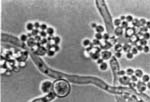 Picture Source
Picture Source
|
| Taxonomy: | Eukaryota | Opisthokonta | Fungi | Dikarya | Ascomycota | saccharomyceta | Saccharomycotina | Saccharomycetes | Saccharomycetales | Debaryomycetaceae | Candida/Lodderomyces clade | Candida | Candida albicans |
| Synonym: | Candida claussenii (obsolete), Candida langeroni (obsolete), Candida stellatoidea (obsolete), Monilia albicans (obsolete) |
| Comment: | Candida albicans is one of the most commonly encountered human pathogens, causing a wide variety of infections ranging from mucosal infections in generally healthy persons to life-threatening systemic infections in individuals with impaired immunity. Candida albicans differs in various respects from other genome sequences in that both copies of the genome are explicitly represented. Similar to many other Candida species, a CUG codon in Candida albicans corresponds to a serine residue instead of the universal leucine. |
|
|

|
Go to NCBI Taxonomy (1182533) |
|
|
|  |
Encyclopedia of life |
|
|  |
Wikipedia |
| Publication: |
Hirakawa MP, Martinez DA, Sakthikumar S et. al. 
( 2015)
Genome Res 25, 413-425.

|
|
[ Opisthokonta | Fungi | Dikarya | . . .
. . . | Candida/Lodderomyces clade | Candida | Candida albicans ]
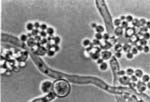 Picture Source
Picture Source
|
| Taxonomy: | Eukaryota | Opisthokonta | Fungi | Dikarya | Ascomycota | saccharomyceta | Saccharomycotina | Saccharomycetes | Saccharomycetales | Debaryomycetaceae | Candida/Lodderomyces clade | Candida | Candida albicans |
| Synonym: | Candida claussenii (obsolete), Candida langeroni (obsolete), Candida stellatoidea (obsolete), Monilia albicans (obsolete) |
| Comment: | Candida albicans is one of the most commonly encountered human pathogens, causing a wide variety of infections ranging from mucosal infections in generally healthy persons to life-threatening systemic infections in individuals with impaired immunity. Candida albicans differs in various respects from other genome sequences in that both copies of the genome are explicitly represented. Similar to many other Candida species, a CUG codon in Candida albicans corresponds to a serine residue instead of the universal leucine. |
|
|

|
Go to NCBI Taxonomy (1182540) |
|
|
|  |
Encyclopedia of life |
|
|  |
Wikipedia |
| Publication: |
Hirakawa MP, Martinez DA, Sakthikumar S et. al. 
( 2015)
Genome Res 25, 413-425.

|
|
[ Opisthokonta | Fungi | Dikarya | . . .
. . . | Candida/Lodderomyces clade | Candida | Candida albicans ]
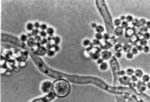 Picture Source
Picture Source
|
| Taxonomy: | Eukaryota | Opisthokonta | Fungi | Dikarya | Ascomycota | saccharomyceta | Saccharomycotina | Saccharomycetes | Saccharomycetales | Debaryomycetaceae | Candida/Lodderomyces clade | Candida | Candida albicans |
| Synonym: | Candida claussenii (obsolete), Candida langeroni (obsolete), Candida stellatoidea (obsolete), Monilia albicans (obsolete) |
| Comment: | Candida albicans is one of the most commonly encountered human pathogens, causing a wide variety of infections ranging from mucosal infections in generally healthy persons to life-threatening systemic infections in individuals with impaired immunity. Candida albicans differs in various respects from other genome sequences in that both copies of the genome are explicitly represented. Similar to many other Candida species, a CUG codon in Candida albicans corresponds to a serine residue instead of the universal leucine. |
|
|

|
Go to NCBI Taxonomy (1182534) |
|
|
|  |
Encyclopedia of life |
|
|  |
Wikipedia |
| Publication: |
Hirakawa MP, Martinez DA, Sakthikumar S et. al. 
( 2015)
Genome Res 25, 413-425.

|
|
[ Opisthokonta | Fungi | Dikarya | . . .
. . . | Candida/Lodderomyces clade | Candida | Candida albicans ]
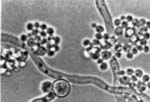 Picture Source
Picture Source
|
| Taxonomy: | Eukaryota | Opisthokonta | Fungi | Dikarya | Ascomycota | saccharomyceta | Saccharomycotina | Saccharomycetes | Saccharomycetales | Debaryomycetaceae | Candida/Lodderomyces clade | Candida | Candida albicans |
| Synonym: | Candida claussenii (obsolete), Candida langeroni (obsolete), Candida stellatoidea (obsolete), Monilia albicans (obsolete) |
| Comment: | Candida albicans is one of the most commonly encountered human pathogens, causing a wide variety of infections ranging from mucosal infections in generally healthy persons to life-threatening systemic infections in individuals with impaired immunity. Candida albicans differs in various respects from other genome sequences in that both copies of the genome are explicitly represented. Similar to many other Candida species, a CUG codon in Candida albicans corresponds to a serine residue instead of the universal leucine. |
|
|

|
Go to NCBI Taxonomy (1182535) |
|
|
|  |
Encyclopedia of life |
|
|  |
Wikipedia |
| Publication: |
Hirakawa MP, Martinez DA, Sakthikumar S et. al. 
( 2015)
Genome Res 25, 413-425.

|
|
[ Opisthokonta | Fungi | Dikarya | . . .
. . . | Candida/Lodderomyces clade | Candida | Candida albicans ]
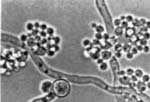 Picture Source
Picture Source
|
| Taxonomy: | Eukaryota | Opisthokonta | Fungi | Dikarya | Ascomycota | saccharomyceta | Saccharomycotina | Saccharomycetes | Saccharomycetales | Debaryomycetaceae | Candida/Lodderomyces clade | Candida | Candida albicans |
| Synonym: | Candida claussenii (obsolete), Candida langeroni (obsolete), Candida stellatoidea (obsolete), Monilia albicans (obsolete) |
| Comment: | Candida albicans is one of the most commonly encountered human pathogens, causing a wide variety of infections ranging from mucosal infections in generally healthy persons to life-threatening systemic infections in individuals with impaired immunity. Candida albicans differs in various respects from other genome sequences in that both copies of the genome are explicitly represented. Similar to many other Candida species, a CUG codon in Candida albicans corresponds to a serine residue instead of the universal leucine. |
|
|

|
Go to NCBI Taxonomy (1182539) |
|
|
|  |
Encyclopedia of life |
|
|  |
Wikipedia |
| Publication: |
Hirakawa MP, Martinez DA, Sakthikumar S et. al. 
( 2015)
Genome Res 25, 413-425.

|
|
[ Opisthokonta | Fungi | Dikarya | . . .
. . . | Candida/Lodderomyces clade | Candida | Candida albicans ]
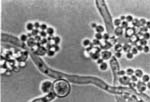 Picture Source
Picture Source
|
| Taxonomy: | Eukaryota | Opisthokonta | Fungi | Dikarya | Ascomycota | saccharomyceta | Saccharomycotina | Saccharomycetes | Saccharomycetales | Debaryomycetaceae | Candida/Lodderomyces clade | Candida | Candida albicans |
| Synonym: | Candida claussenii (obsolete), Candida langeroni (obsolete), Candida stellatoidea (obsolete), Monilia albicans (obsolete) |
| Comment: | Candida albicans is one of the most commonly encountered human pathogens, causing a wide variety of infections ranging from mucosal infections in generally healthy persons to life-threatening systemic infections in individuals with impaired immunity. Candida albicans differs in various respects from other genome sequences in that both copies of the genome are explicitly represented. Similar to many other Candida species, a CUG codon in Candida albicans corresponds to a serine residue instead of the universal leucine. |
|
|

|
Go to NCBI Taxonomy (1182536) |
|
|
|  |
Encyclopedia of life |
|
|  |
Wikipedia |
| Publication: |
Hirakawa MP, Martinez DA, Sakthikumar S et. al. 
( 2015)
Genome Res 25, 413-425.

|
|
[ Opisthokonta | Fungi | Dikarya | . . .
. . . | Debaryomycetaceae | Candida/Lodderomyces clade | Candida ]
[ Opisthokonta | Fungi | Dikarya | . . .
. . . | Candida/Lodderomyces clade | Candida | Candida albicans ]
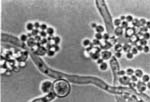 Picture Source
Picture Source
|
| Taxonomy: | Eukaryota | Opisthokonta | Fungi | Dikarya | Ascomycota | saccharomyceta | Saccharomycotina | Saccharomycetes | Saccharomycetales | Debaryomycetaceae | Candida/Lodderomyces clade | Candida | Candida albicans |
| Synonym: | Candida claussenii (obsolete), Candida langeroni (obsolete), Candida stellatoidea (obsolete), Monilia albicans (obsolete) |
| Comment: | Candida albicans is one of the most commonly encountered human pathogens, causing a wide variety of infections ranging from mucosal infections in generally healthy persons to life-threatening systemic infections in individuals with impaired immunity. Candida albicans differs in various respects from other genome sequences in that both copies of the genome are explicitly represented. Similar to many other Candida species, a CUG codon in Candida albicans corresponds to a serine residue instead of the universal leucine. |
|
|

|
Go to NCBI Taxonomy (1182532) |
|
|
|  |
Encyclopedia of life |
|
|  |
Wikipedia |
| Publication: |
Hirakawa MP, Martinez DA, Sakthikumar S et. al. 
( 2015)
Genome Res 25, 413-425.

|
|
[ Opisthokonta | Fungi | Dikarya | . . .
. . . | Candida/Lodderomyces clade | Candida | Candida albicans ]
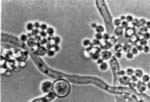 Picture Source
Picture Source
|
| Taxonomy: | Eukaryota | Opisthokonta | Fungi | Dikarya | Ascomycota | saccharomyceta | Saccharomycotina | Saccharomycetes | Saccharomycetales | Debaryomycetaceae | Candida/Lodderomyces clade | Candida | Candida albicans |
| Synonym: | Candida claussenii (obsolete), Candida langeroni (obsolete), Candida stellatoidea (obsolete), Monilia albicans (obsolete) |
| Comment: | Candida albicans is one of the most commonly encountered human pathogens, causing a wide variety of infections ranging from mucosal infections in generally healthy persons to life-threatening systemic infections in individuals with impaired immunity. Candida albicans differs in various respects from other genome sequences in that both copies of the genome are explicitly represented. Similar to many other Candida species, a CUG codon in Candida albicans corresponds to a serine residue instead of the universal leucine. |
|
|

|
Go to NCBI Taxonomy (1325634) |
|
|
|  |
Encyclopedia of life |
|
|  |
Wikipedia |
| Publication: |
Hirakawa MP, Martinez DA, Sakthikumar S et. al. 
( 2015)
Genome Res 25, 413-425.

|
|
[ Opisthokonta | Fungi | Dikarya | . . .
. . . | Candida/Lodderomyces clade | Candida | Candida albicans ]
[ Opisthokonta | Fungi | Dikarya | . . .
. . . | Candida/Lodderomyces clade | Candida | Candida albicans ]
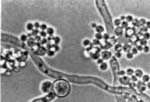 Picture Source
Picture Source
|
| Taxonomy: | Eukaryota | Opisthokonta | Fungi | Dikarya | Ascomycota | saccharomyceta | Saccharomycotina | Saccharomycetes | Saccharomycetales | Debaryomycetaceae | Candida/Lodderomyces clade | Candida | Candida albicans |
| Synonym: | Candida claussenii (obsolete), Candida langeroni (obsolete), Candida stellatoidea (obsolete), Monilia albicans (obsolete) |
| Comment: | Candida albicans is one of the most commonly encountered human pathogens, causing a wide variety of infections ranging from mucosal infections in generally healthy persons to life-threatening systemic infections in individuals with impaired immunity. Candida albicans differs in various respects from other genome sequences in that both copies of the genome are explicitly represented. Similar to many other Candida species, a CUG codon in Candida albicans corresponds to a serine residue instead of the universal leucine. |
|
|

|
Go to NCBI Taxonomy (1182535) |
|
|
|  |
Encyclopedia of life |
|
|  |
Wikipedia |
| Publication: |
Hirakawa MP, Martinez DA, Sakthikumar S et. al. 
( 2015)
Genome Res 25, 413-425.

|
|
[ Opisthokonta | Fungi | Dikarya | . . .
. . . | Candida/Lodderomyces clade | Candida | Candida albicans ]
 Picture Source
Picture Source
|
| Taxonomy: | Eukaryota | Opisthokonta | Fungi | Dikarya | Ascomycota | saccharomyceta | Saccharomycotina | Saccharomycetes | Saccharomycetales | Debaryomycetaceae | Candida/Lodderomyces clade | Candida | Candida albicans |
| Synonym: | Candida claussenii (obsolete), Candida langeroni (obsolete), Candida stellatoidea (obsolete), Monilia albicans (obsolete) |
| Comment: | Candida albicans is one of the most commonly encountered human pathogens, causing a wide variety of infections ranging from mucosal infections in generally healthy persons to life-threatening systemic infections in individuals with impaired immunity. Candida albicans differs in various respects from other genome sequences in that both copies of the genome are explicitly represented. Similar to many other Candida species, a CUG codon in Candida albicans corresponds to a serine residue instead of the universal leucine. |
|
|

|
Go to NCBI Taxonomy (1094982) |
|
|
|  |
Encyclopedia of life |
|
|  |
Wikipedia |
| Publication: |
Hirakawa MP, Martinez DA, Sakthikumar S et. al. 
( 2015)
Genome Res 25, 413-425.

|
|
[ Opisthokonta | Fungi | Dikarya | . . .
. . . | Candida/Lodderomyces clade | Candida | Candida albicans ]
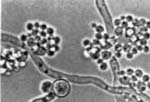 Picture Source
Picture Source
|
| Taxonomy: | Eukaryota | Opisthokonta | Fungi | Dikarya | Ascomycota | saccharomyceta | Saccharomycotina | Saccharomycetes | Saccharomycetales | Debaryomycetaceae | Candida/Lodderomyces clade | Candida | Candida albicans |
| Synonym: | Candida claussenii (obsolete), Candida langeroni (obsolete), Candida stellatoidea (obsolete), Monilia albicans (obsolete) |
| Comment: | Candida albicans is one of the most commonly encountered human pathogens, causing a wide variety of infections ranging from mucosal infections in generally healthy persons to life-threatening systemic infections in individuals with impaired immunity. Candida albicans differs in various respects from other genome sequences in that both copies of the genome are explicitly represented. Similar to many other Candida species, a CUG codon in Candida albicans corresponds to a serine residue instead of the universal leucine. |
|
|

|
Go to NCBI Taxonomy (1094991) |
|
|
|  |
Encyclopedia of life |
|
|  |
Wikipedia |
| Publication: |
Hirakawa MP, Martinez DA, Sakthikumar S et. al. 
( 2015)
Genome Res 25, 413-425.

|
|
[ Opisthokonta | Fungi | Dikarya | . . .
. . . | Candida/Lodderomyces clade | Candida | Candida albicans ]
 Picture Source
Picture Source
|
| Taxonomy: | Eukaryota | Opisthokonta | Fungi | Dikarya | Ascomycota | saccharomyceta | Saccharomycotina | Saccharomycetes | Saccharomycetales | Debaryomycetaceae | Candida/Lodderomyces clade | Candida | Candida albicans |
| Synonym: | Candida claussenii (obsolete), Candida langeroni (obsolete), Candida stellatoidea (obsolete), Monilia albicans (obsolete) |
| Comment: | Candida albicans is one of the most commonly encountered human pathogens, causing a wide variety of infections ranging from mucosal infections in generally healthy persons to life-threatening systemic infections in individuals with impaired immunity. Candida albicans differs in various respects from other genome sequences in that both copies of the genome are explicitly represented. Similar to many other Candida species, a CUG codon in Candida albicans corresponds to a serine residue instead of the universal leucine. |
|
|

|
Go to NCBI Taxonomy (1182535) |
|
|
|  |
Encyclopedia of life |
|
|  |
Wikipedia |
| Publication: |
Hirakawa MP, Martinez DA, Sakthikumar S et. al. 
( 2015)
Genome Res 25, 413-425.

|
|
[ Opisthokonta | Fungi | Dikarya | . . .
. . . | Candida/Lodderomyces clade | Candida | Candida albicans ]
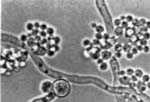 Picture Source
Picture Source
|
| Taxonomy: | Eukaryota | Opisthokonta | Fungi | Dikarya | Ascomycota | saccharomyceta | Saccharomycotina | Saccharomycetes | Saccharomycetales | Debaryomycetaceae | Candida/Lodderomyces clade | Candida | Candida albicans |
| Synonym: | Candida claussenii (obsolete), Candida langeroni (obsolete), Candida stellatoidea (obsolete), Monilia albicans (obsolete) |
| Comment: | Candida albicans is one of the most commonly encountered human pathogens, causing a wide variety of infections ranging from mucosal infections in generally healthy persons to life-threatening systemic infections in individuals with impaired immunity. Candida albicans differs in various respects from other genome sequences in that both copies of the genome are explicitly represented. Similar to many other Candida species, a CUG codon in Candida albicans corresponds to a serine residue instead of the universal leucine. |
|
|

|
Go to NCBI Taxonomy (1182535) |
|
|
|  |
Encyclopedia of life |
|
|  |
Wikipedia |
| Publication: |
Hirakawa MP, Martinez DA, Sakthikumar S et. al. 
( 2015)
Genome Res 25, 413-425.

|
|
[ Opisthokonta | Fungi | Dikarya | . . .
. . . | Candida/Lodderomyces clade | Candida | Candida albicans ]
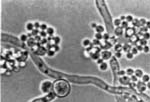 Picture Source
Picture Source
|
| Taxonomy: | Eukaryota | Opisthokonta | Fungi | Dikarya | Ascomycota | saccharomyceta | Saccharomycotina | Saccharomycetes | Saccharomycetales | Debaryomycetaceae | Candida/Lodderomyces clade | Candida | Candida albicans |
| Synonym: | Candida claussenii (obsolete), Candida langeroni (obsolete), Candida stellatoidea (obsolete), Monilia albicans (obsolete) |
| Comment: | Candida albicans is one of the most commonly encountered human pathogens, causing a wide variety of infections ranging from mucosal infections in generally healthy persons to life-threatening systemic infections in individuals with impaired immunity. Candida albicans differs in various respects from other genome sequences in that both copies of the genome are explicitly represented. Similar to many other Candida species, a CUG codon in Candida albicans corresponds to a serine residue instead of the universal leucine. |
|
|

|
Go to NCBI Taxonomy (1094993) |
|
|
|  |
Encyclopedia of life |
|
|  |
Wikipedia |
| Publication: |
Hirakawa MP, Martinez DA, Sakthikumar S et. al. 
( 2015)
Genome Res 25, 413-425.

|
|
[ Opisthokonta | Fungi | Dikarya | . . .
. . . | Candida/Lodderomyces clade | Candida | Candida albicans ]
 Picture Source
Picture Source
|
| Taxonomy: | Eukaryota | Opisthokonta | Fungi | Dikarya | Ascomycota | saccharomyceta | Saccharomycotina | Saccharomycetes | Saccharomycetales | Debaryomycetaceae | Candida/Lodderomyces clade | Candida | Candida albicans |
| Synonym: | Candida claussenii (obsolete), Candida langeroni (obsolete), Candida stellatoidea (obsolete), Monilia albicans (obsolete) |
| Comment: | Candida albicans is one of the most commonly encountered human pathogens, causing a wide variety of infections ranging from mucosal infections in generally healthy persons to life-threatening systemic infections in individuals with impaired immunity. Candida albicans differs in various respects from other genome sequences in that both copies of the genome are explicitly represented. Similar to many other Candida species, a CUG codon in Candida albicans corresponds to a serine residue instead of the universal leucine. |
|
|

|
Go to NCBI Taxonomy (1094996) |
|
|
|  |
Encyclopedia of life |
|
|  |
Wikipedia |
| Publication: |
Hirakawa MP, Martinez DA, Sakthikumar S et. al. 
( 2015)
Genome Res 25, 413-425.

|
|
[ Opisthokonta | Fungi | Dikarya | . . .
. . . | Candida/Lodderomyces clade | Candida | Candida albicans ]
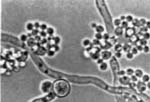 Picture Source
Picture Source
|
| Taxonomy: | Eukaryota | Opisthokonta | Fungi | Dikarya | Ascomycota | saccharomyceta | Saccharomycotina | Saccharomycetes | Saccharomycetales | Debaryomycetaceae | Candida/Lodderomyces clade | Candida | Candida albicans |
| Synonym: | Candida claussenii (obsolete), Candida langeroni (obsolete), Candida stellatoidea (obsolete), Monilia albicans (obsolete) |
| Comment: | Candida albicans is one of the most commonly encountered human pathogens, causing a wide variety of infections ranging from mucosal infections in generally healthy persons to life-threatening systemic infections in individuals with impaired immunity. Candida albicans differs in various respects from other genome sequences in that both copies of the genome are explicitly represented. Similar to many other Candida species, a CUG codon in Candida albicans corresponds to a serine residue instead of the universal leucine. |
|
|

|
Go to NCBI Taxonomy (1182535) |
|
|
|  |
Encyclopedia of life |
|
|  |
Wikipedia |
| Publication: |
Hirakawa MP, Martinez DA, Sakthikumar S et. al. 
( 2015)
Genome Res 25, 413-425.

|
|
[ Opisthokonta | Fungi | Dikarya | . . .
. . . | Candida/Lodderomyces clade | Candida | Candida albicans ]
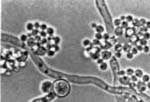 Picture Source
Picture Source
|
| Taxonomy: | Eukaryota | Opisthokonta | Fungi | Dikarya | Ascomycota | saccharomyceta | Saccharomycotina | Saccharomycetes | Saccharomycetales | Debaryomycetaceae | Candida/Lodderomyces clade | Candida | Candida albicans |
| Synonym: | Candida claussenii (obsolete), Candida langeroni (obsolete), Candida stellatoidea (obsolete), Monilia albicans (obsolete) |
| Comment: | Candida albicans is one of the most commonly encountered human pathogens, causing a wide variety of infections ranging from mucosal infections in generally healthy persons to life-threatening systemic infections in individuals with impaired immunity. Candida albicans differs in various respects from other genome sequences in that both copies of the genome are explicitly represented. Similar to many other Candida species, a CUG codon in Candida albicans corresponds to a serine residue instead of the universal leucine. |
|
|

|
Go to NCBI Taxonomy (1094986) |
|
|
|  |
Encyclopedia of life |
|
|  |
Wikipedia |
| Publication: |
Hirakawa MP, Martinez DA, Sakthikumar S et. al. 
( 2015)
Genome Res 25, 413-425.

|
|
[ Opisthokonta | Fungi | Dikarya | . . .
. . . | Candida/Lodderomyces clade | Candida | Candida albicans ]
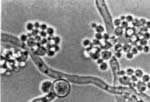 Picture Source
Picture Source
|
| Taxonomy: | Eukaryota | Opisthokonta | Fungi | Dikarya | Ascomycota | saccharomyceta | Saccharomycotina | Saccharomycetes | Saccharomycetales | Debaryomycetaceae | Candida/Lodderomyces clade | Candida | Candida albicans |
| Synonym: | Candida claussenii (obsolete), Candida langeroni (obsolete), Candida stellatoidea (obsolete), Monilia albicans (obsolete) |
| Comment: | Candida albicans is one of the most commonly encountered human pathogens, causing a wide variety of infections ranging from mucosal infections in generally healthy persons to life-threatening systemic infections in individuals with impaired immunity. Candida albicans differs in various respects from other genome sequences in that both copies of the genome are explicitly represented. Similar to many other Candida species, a CUG codon in Candida albicans corresponds to a serine residue instead of the universal leucine. |
|
|

|
Go to NCBI Taxonomy (1094994) |
|
|
|  |
Encyclopedia of life |
|
|  |
Wikipedia |
| Publication: |
Hirakawa MP, Martinez DA, Sakthikumar S et. al. 
( 2015)
Genome Res 25, 413-425.

|
|
[ Opisthokonta | Fungi | Dikarya | . . .
. . . | Candida/Lodderomyces clade | Candida | Candida albicans ]
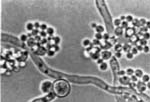 Picture Source
Picture Source
|
| Taxonomy: | Eukaryota | Opisthokonta | Fungi | Dikarya | Ascomycota | saccharomyceta | Saccharomycotina | Saccharomycetes | Saccharomycetales | Debaryomycetaceae | Candida/Lodderomyces clade | Candida | Candida albicans |
| Synonym: | Candida claussenii (obsolete), Candida langeroni (obsolete), Candida stellatoidea (obsolete), Monilia albicans (obsolete) |
| Comment: | Candida albicans is one of the most commonly encountered human pathogens, causing a wide variety of infections ranging from mucosal infections in generally healthy persons to life-threatening systemic infections in individuals with impaired immunity. Candida albicans differs in various respects from other genome sequences in that both copies of the genome are explicitly represented. Similar to many other Candida species, a CUG codon in Candida albicans corresponds to a serine residue instead of the universal leucine. |
|
|

|
Go to NCBI Taxonomy (1094995) |
|
|
|  |
Encyclopedia of life |
|
|  |
Wikipedia |
| Publication: |
Hirakawa MP, Martinez DA, Sakthikumar S et. al. 
( 2015)
Genome Res 25, 413-425.

|
|
[ Opisthokonta | Fungi | Dikarya | . . .
. . . | Candida/Lodderomyces clade | Candida | Candida albicans ]
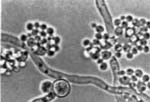 Picture Source
Picture Source
|
| Taxonomy: | Eukaryota | Opisthokonta | Fungi | Dikarya | Ascomycota | saccharomyceta | Saccharomycotina | Saccharomycetes | Saccharomycetales | Debaryomycetaceae | Candida/Lodderomyces clade | Candida | Candida albicans |
| Synonym: | Candida claussenii (obsolete), Candida langeroni (obsolete), Candida stellatoidea (obsolete), Monilia albicans (obsolete) |
| Comment: | Candida albicans is one of the most commonly encountered human pathogens, causing a wide variety of infections ranging from mucosal infections in generally healthy persons to life-threatening systemic infections in individuals with impaired immunity. Candida albicans differs in various respects from other genome sequences in that both copies of the genome are explicitly represented. Similar to many other Candida species, a CUG codon in Candida albicans corresponds to a serine residue instead of the universal leucine. |
|
|

|
Go to NCBI Taxonomy (1094997) |
|
|
|  |
Encyclopedia of life |
|
|  |
Wikipedia |
| Publication: |
Hirakawa MP, Martinez DA, Sakthikumar S et. al. 
( 2015)
Genome Res 25, 413-425.

|
|
[ Opisthokonta | Fungi | Dikarya | . . .
. . . | Candida/Lodderomyces clade | Candida | Candida albicans ]
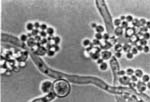 Picture Source
Picture Source
|
| Taxonomy: | Eukaryota | Opisthokonta | Fungi | Dikarya | Ascomycota | saccharomyceta | Saccharomycotina | Saccharomycetes | Saccharomycetales | Debaryomycetaceae | Candida/Lodderomyces clade | Candida | Candida albicans |
| Synonym: | Candida claussenii (obsolete), Candida langeroni (obsolete), Candida stellatoidea (obsolete), Monilia albicans (obsolete) |
| Comment: | Candida albicans is one of the most commonly encountered human pathogens, causing a wide variety of infections ranging from mucosal infections in generally healthy persons to life-threatening systemic infections in individuals with impaired immunity. Candida albicans differs in various respects from other genome sequences in that both copies of the genome are explicitly represented. Similar to many other Candida species, a CUG codon in Candida albicans corresponds to a serine residue instead of the universal leucine. |
|
|

|
Go to NCBI Taxonomy (1094998) |
|
|
|  |
Encyclopedia of life |
|
|  |
Wikipedia |
| Publication: |
Hirakawa MP, Martinez DA, Sakthikumar S et. al. 
( 2015)
Genome Res 25, 413-425.

|
|
[ Opisthokonta | Fungi | Dikarya | . . .
. . . | Candida/Lodderomyces clade | Candida | Candida albicans ]
 Picture Source
Picture Source
|
| Taxonomy: | Eukaryota | Opisthokonta | Fungi | Dikarya | Ascomycota | saccharomyceta | Saccharomycotina | Saccharomycetes | Saccharomycetales | Debaryomycetaceae | Candida/Lodderomyces clade | Candida | Candida albicans |
| Synonym: | Candida claussenii (obsolete), Candida langeroni (obsolete), Candida stellatoidea (obsolete), Monilia albicans (obsolete) |
| Comment: | Candida albicans is one of the most commonly encountered human pathogens, causing a wide variety of infections ranging from mucosal infections in generally healthy persons to life-threatening systemic infections in individuals with impaired immunity. Candida albicans differs in various respects from other genome sequences in that both copies of the genome are explicitly represented. Similar to many other Candida species, a CUG codon in Candida albicans corresponds to a serine residue instead of the universal leucine. |
|
|

|
Go to NCBI Taxonomy (1094999) |
|
|
|  |
Encyclopedia of life |
|
|  |
Wikipedia |
| Publication: |
Hirakawa MP, Martinez DA, Sakthikumar S et. al. 
( 2015)
Genome Res 25, 413-425.

|
|
[ Opisthokonta | Fungi | Dikarya | . . .
. . . | Candida/Lodderomyces clade | Candida | Candida albicans ]
 Picture Source
Picture Source
|
| Taxonomy: | Eukaryota | Opisthokonta | Fungi | Dikarya | Ascomycota | saccharomyceta | Saccharomycotina | Saccharomycetes | Saccharomycetales | Debaryomycetaceae | Candida/Lodderomyces clade | Candida | Candida albicans |
| Synonym: | Candida claussenii (obsolete), Candida langeroni (obsolete), Candida stellatoidea (obsolete), Monilia albicans (obsolete) |
| Comment: | Candida albicans is one of the most commonly encountered human pathogens, causing a wide variety of infections ranging from mucosal infections in generally healthy persons to life-threatening systemic infections in individuals with impaired immunity. Candida albicans differs in various respects from other genome sequences in that both copies of the genome are explicitly represented. Similar to many other Candida species, a CUG codon in Candida albicans corresponds to a serine residue instead of the universal leucine. |
|
|

|
Go to NCBI Taxonomy (1095000) |
|
|
|  |
Encyclopedia of life |
|
|  |
Wikipedia |
| Publication: |
Hirakawa MP, Martinez DA, Sakthikumar S et. al. 
( 2015)
Genome Res 25, 413-425.

|
|
[ Opisthokonta | Fungi | Dikarya | . . .
. . . | Candida/Lodderomyces clade | Candida | Candida albicans ]
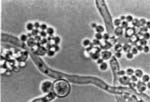 Picture Source
Picture Source
|
| Taxonomy: | Eukaryota | Opisthokonta | Fungi | Dikarya | Ascomycota | saccharomyceta | Saccharomycotina | Saccharomycetes | Saccharomycetales | Debaryomycetaceae | Candida/Lodderomyces clade | Candida | Candida albicans |
| Synonym: | Candida claussenii (obsolete), Candida langeroni (obsolete), Candida stellatoidea (obsolete), Monilia albicans (obsolete) |
| Comment: | Candida albicans is one of the most commonly encountered human pathogens, causing a wide variety of infections ranging from mucosal infections in generally healthy persons to life-threatening systemic infections in individuals with impaired immunity. Candida albicans differs in various respects from other genome sequences in that both copies of the genome are explicitly represented. Similar to many other Candida species, a CUG codon in Candida albicans corresponds to a serine residue instead of the universal leucine. |
|
|

|
Go to NCBI Taxonomy (1182535) |
|
|
|  |
Encyclopedia of life |
|
|  |
Wikipedia |
| Publication: |
Hirakawa MP, Martinez DA, Sakthikumar S et. al. 
( 2015)
Genome Res 25, 413-425.

|
|
[ Opisthokonta | Fungi | Dikarya | . . .
. . . | Candida/Lodderomyces clade | Candida | Candida albicans ]
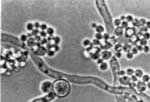 Picture Source
Picture Source
|
| Taxonomy: | Eukaryota | Opisthokonta | Fungi | Dikarya | Ascomycota | saccharomyceta | Saccharomycotina | Saccharomycetes | Saccharomycetales | Debaryomycetaceae | Candida/Lodderomyces clade | Candida | Candida albicans |
| Synonym: | Candida claussenii (obsolete), Candida langeroni (obsolete), Candida stellatoidea (obsolete), Monilia albicans (obsolete) |
| Comment: | Candida albicans is one of the most commonly encountered human pathogens, causing a wide variety of infections ranging from mucosal infections in generally healthy persons to life-threatening systemic infections in individuals with impaired immunity. Candida albicans differs in various respects from other genome sequences in that both copies of the genome are explicitly represented. Similar to many other Candida species, a CUG codon in Candida albicans corresponds to a serine residue instead of the universal leucine. |
|
|

|
Go to NCBI Taxonomy (1094984) |
|
|
|  |
Encyclopedia of life |
|
|  |
Wikipedia |
| Publication: |
Hirakawa MP, Martinez DA, Sakthikumar S et. al. 
( 2015)
Genome Res 25, 413-425.

|
|
[ Opisthokonta | Fungi | Dikarya | . . .
. . . | Candida/Lodderomyces clade | Candida | Candida albicans ]
 Picture Source
Picture Source
|
| Taxonomy: | Eukaryota | Opisthokonta | Fungi | Dikarya | Ascomycota | saccharomyceta | Saccharomycotina | Saccharomycetes | Saccharomycetales | Debaryomycetaceae | Candida/Lodderomyces clade | Candida | Candida albicans |
| Synonym: | Candida claussenii (obsolete), Candida langeroni (obsolete), Candida stellatoidea (obsolete), Monilia albicans (obsolete) |
| Comment: | Candida albicans is one of the most commonly encountered human pathogens, causing a wide variety of infections ranging from mucosal infections in generally healthy persons to life-threatening systemic infections in individuals with impaired immunity. Candida albicans differs in various respects from other genome sequences in that both copies of the genome are explicitly represented. Similar to many other Candida species, a CUG codon in Candida albicans corresponds to a serine residue instead of the universal leucine. |
|
|

|
Go to NCBI Taxonomy (1182535) |
|
|
|  |
Encyclopedia of life |
|
|  |
Wikipedia |
| Publication: |
Hirakawa MP, Martinez DA, Sakthikumar S et. al. 
( 2015)
Genome Res 25, 413-425.

|
|
[ Opisthokonta | Fungi | Dikarya | . . .
. . . | Candida/Lodderomyces clade | Candida | Candida albicans ]
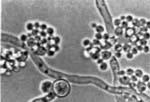 Picture Source
Picture Source
|
| Taxonomy: | Eukaryota | Opisthokonta | Fungi | Dikarya | Ascomycota | saccharomyceta | Saccharomycotina | Saccharomycetes | Saccharomycetales | Debaryomycetaceae | Candida/Lodderomyces clade | Candida | Candida albicans |
| Synonym: | Candida claussenii (obsolete), Candida langeroni (obsolete), Candida stellatoidea (obsolete), Monilia albicans (obsolete) |
| Comment: | Candida albicans is one of the most commonly encountered human pathogens, causing a wide variety of infections ranging from mucosal infections in generally healthy persons to life-threatening systemic infections in individuals with impaired immunity. Candida albicans differs in various respects from other genome sequences in that both copies of the genome are explicitly represented. Similar to many other Candida species, a CUG codon in Candida albicans corresponds to a serine residue instead of the universal leucine. |
|
|

|
Go to NCBI Taxonomy (237561) |
|
|
|  |
Encyclopedia of life |
|
|  |
Wikipedia |
| Publications: |
Butler G, Rasmussen MD, Lin MF et. al. 
( 2009)
Nature 459, 657-662.

van het Hoog M, Rast TJ, Martchenko M et. al. 
( 2007)
Genome Biol 8, R52.

Braun BR, van Het Hoog M, d'Enfert C et. al. 
( 2005)
PLoS Genet 1, 36-57.

|
|
[ Opisthokonta | Fungi | Dikarya | . . .
. . . | Candida/Lodderomyces clade | Candida | Candida albicans ]
[ Opisthokonta | Fungi | Dikarya | . . .
. . . | Candida/Lodderomyces clade | Candida | Candida albicans ]
[ Opisthokonta | Fungi | Dikarya | . . .
. . . | Debaryomycetaceae | Candida/Lodderomyces clade | Candida ]
[ Opisthokonta | Fungi | Dikarya | . . .
. . . | Debaryomycetaceae | Candida/Lodderomyces clade | Candida ]
[ Opisthokonta | Fungi | Dikarya | . . .
. . . | Debaryomycetaceae | Candida/Lodderomyces clade | Candida ]
[ Opisthokonta | Fungi | Dikarya | . . .
. . . | Debaryomycetaceae | Candida/Lodderomyces clade | Candida ]
[ Opisthokonta | Fungi | Dikarya | . . .
. . . | Candida/Lodderomyces clade | Candida | Candida albicans ]
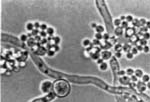 Picture Source
Picture Source
|
| Taxonomy: | Eukaryota | Opisthokonta | Fungi | Dikarya | Ascomycota | saccharomyceta | Saccharomycotina | Saccharomycetes | Saccharomycetales | Debaryomycetaceae | Candida/Lodderomyces clade | Candida | Candida albicans |
| Synonym: | Candida claussenii (obsolete), Candida langeroni (obsolete), Candida stellatoidea (obsolete), Monilia albicans (obsolete) |
| Comment: | Candida albicans is one of the most commonly encountered human pathogens, causing a wide variety of infections ranging from mucosal infections in generally healthy persons to life-threatening systemic infections in individuals with impaired immunity. Candida albicans differs in various respects from other genome sequences in that both copies of the genome are explicitly represented. Similar to many other Candida species, a CUG codon in Candida albicans corresponds to a serine residue instead of the universal leucine. |
|
|

|
Go to NCBI Taxonomy (294748) |
|
|
|  |
Encyclopedia of life |
|
|  |
Wikipedia |
| Publication: |
Butler G, Rasmussen MD, Lin MF et. al. 
( 2009)
Nature 459, 657-662.

|
|
[ Opisthokonta | Fungi | Dikarya | . . .
. . . | Debaryomycetaceae | Candida/Lodderomyces clade | Candida ]
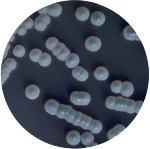 Picture Source
Picture Source
|
| Taxonomy: | Eukaryota | Opisthokonta | Fungi | Dikarya | Ascomycota | saccharomyceta | Saccharomycotina | Saccharomycetes | Saccharomycetales | Debaryomycetaceae | Candida/Lodderomyces clade | Candida |
| Synonym: | Procandida tropicalis, Oidium tropicale, Mycotorula tropicalis, Myceloblastanon tropicale, Monilia tropicalis, Endomyces tropicalis, Castellania tropicalis, Candida albicans var. tropicalis, Atelosaccharomyces tropicalis |
| Comment: | The yeast Candida tropicalis is the second most pathogenic Candida species after Candida albicans and is more often associated with deep fungal infections than normal mucosa. Candida tropicalis is an asexual diploid organism. Similar to many other Candida species, a CUG codon in Candida tropicalis corresponds to a serine residue instead of the universal leucine. |
|
|

|
Go to NCBI Taxonomy (5482) |
|
|
|  |
Encyclopedia of life |
|
|  |
Wikipedia |
| Publication: |
Li B, Guo T, Chen Y et. al. 
( 2014)
Genome Announc 2, pii: e00316-14.

|
|
[ Opisthokonta | Fungi | Dikarya | . . .
. . . | Candida/Lodderomyces clade | Candida | Candida tropicalis ]
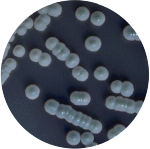 Picture Source
Picture Source
|
| Taxonomy: | Eukaryota | Opisthokonta | Fungi | Dikarya | Ascomycota | saccharomyceta | Saccharomycotina | Saccharomycetes | Saccharomycetales | Debaryomycetaceae | Candida/Lodderomyces clade | Candida | Candida tropicalis |
| Synonym: | Procandida tropicalis, Oidium tropicale, Mycotorula tropicalis, Myceloblastanon tropicale, Monilia tropicalis, Endomyces tropicalis, Castellania tropicalis, Candida albicans var. tropicalis, Atelosaccharomyces tropicalis |
| Comment: | The yeast Candida tropicalis is the second most pathogenic Candida species after Candida albicans and is more often associated with deep fungal infections than normal mucosa. Candida tropicalis is an asexual diploid organism. Similar to many other Candida species, a CUG codon in Candida tropicalis corresponds to a serine residue instead of the universal leucine. |
|
|

|
Go to NCBI Taxonomy (559300) |
|
|
|  |
Encyclopedia of life |
|
|  |
Wikipedia |
| Publication: |
Blandin G, Ozier-Kalogeropoulos O, Wincker P et. al. 
( 2000)
FEBS Lett 487, 91-4.

|
|
|
Candida tropicalis MYA-3404
|
[ Opisthokonta | Fungi | Dikarya | . . .
. . . | Candida/Lodderomyces clade | Candida | Candida tropicalis ]
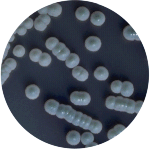 Picture Source
Picture Source
|
| Taxonomy: | Eukaryota | Opisthokonta | Fungi | Dikarya | Ascomycota | saccharomyceta | Saccharomycotina | Saccharomycetes | Saccharomycetales | Debaryomycetaceae | Candida/Lodderomyces clade | Candida | Candida tropicalis |
| Synonym: | Procandida tropicalis, Oidium tropicale, Mycotorula tropicalis, Myceloblastanon tropicale, Monilia tropicalis, Endomyces tropicalis, Castellania tropicalis, Candida albicans var. tropicalis, Atelosaccharomyces tropicalis |
| Comment: | The yeast Candida tropicalis is the second most pathogenic Candida species after Candida albicans and is more often associated with deep fungal infections than normal mucosa. Candida tropicalis is an asexual diploid organism. Similar to many other Candida species, a CUG codon in Candida tropicalis corresponds to a serine residue instead of the universal leucine. |
|
|

|
Go to NCBI Taxonomy (294747) |
|
|
|  |
Encyclopedia of life |
|
|  |
Wikipedia |
| Publication: |
Butler G, Rasmussen MD, Lin MF et. al. 
( 2009)
Nature 459, 657-662.

|
|
[ Opisthokonta | Fungi | Dikarya | . . .
. . . | Debaryomycetaceae | Candida/Lodderomyces clade | Candida ]
 Picture Source
Picture Source
 Picture Source
Picture Source
 Picture Source
Picture Source
 Picture Source
Picture Source
 Picture Source
Picture Source
 Picture Source
Picture Source
 Picture Source
Picture Source
 Picture Source
Picture Source
 Picture Source
Picture Source
 Picture Source
Picture Source
 Picture Source
Picture Source
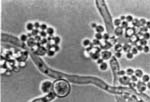 Picture Source
Picture Source
 Picture Source
Picture Source
 Picture Source
Picture Source
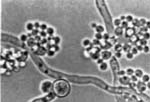 Picture Source
Picture Source
 Picture Source
Picture Source
 Picture Source
Picture Source
 Picture Source
Picture Source
 Picture Source
Picture Source
 Picture Source
Picture Source
 Picture Source
Picture Source
 Picture Source
Picture Source
 Picture Source
Picture Source
 Picture Source
Picture Source
 Picture Source
Picture Source
 Picture Source
Picture Source
 Picture Source
Picture Source
 Picture Source
Picture Source
 Picture Source
Picture Source
 Picture Source
Picture Source
 Picture Source
Picture Source
 Picture Source
Picture Source
 Picture Source
Picture Source
 Picture Source
Picture Source
 Picture Source
Picture Source
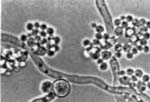 Picture Source
Picture Source
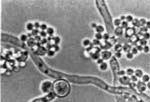 Picture Source
Picture Source
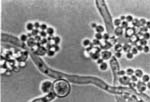 Picture Source
Picture Source
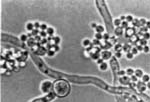 Picture Source
Picture Source
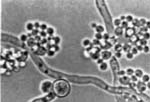 Picture Source
Picture Source
 Picture Source
Picture Source
 Picture Source
Picture Source
 Picture Source
Picture Source
 Picture Source
Picture Source
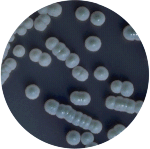 Picture Source
Picture Source










